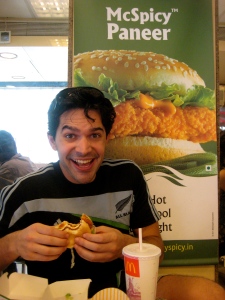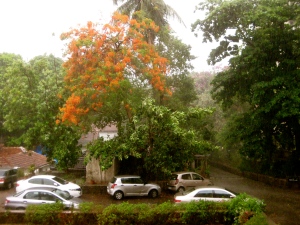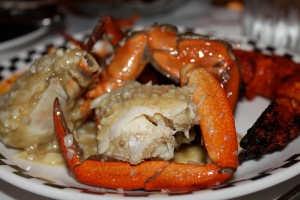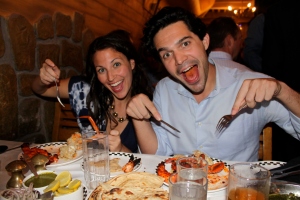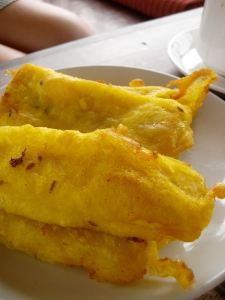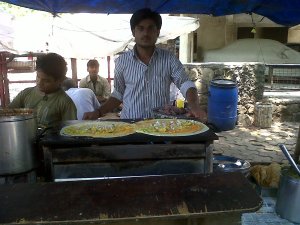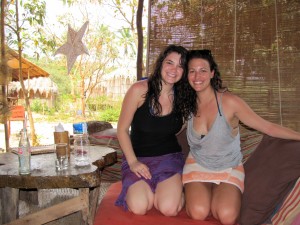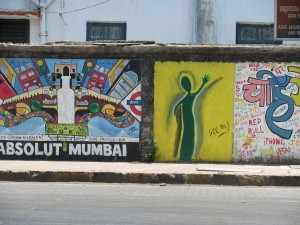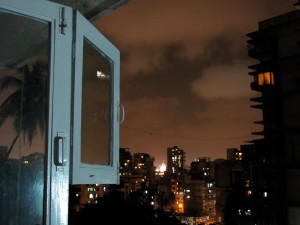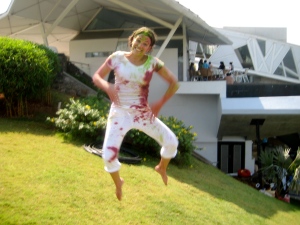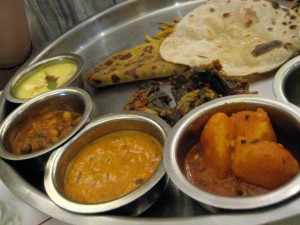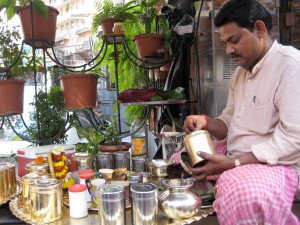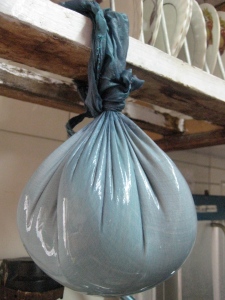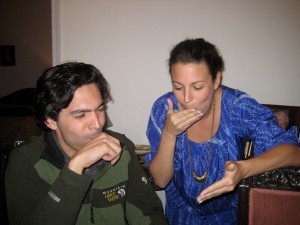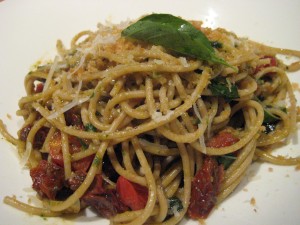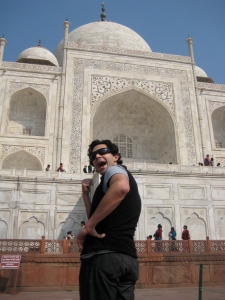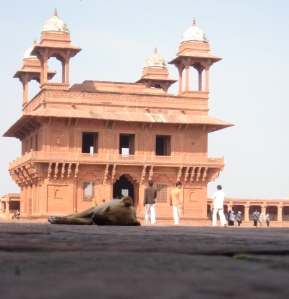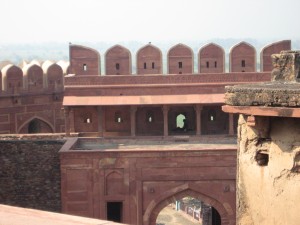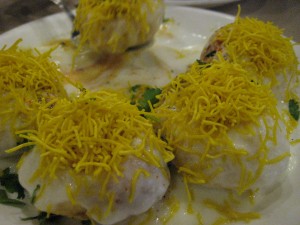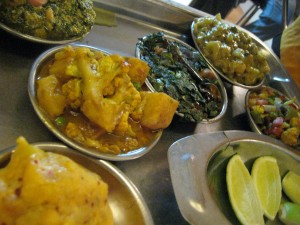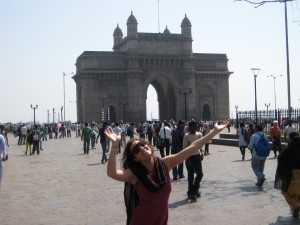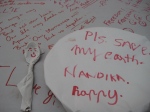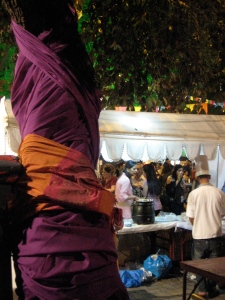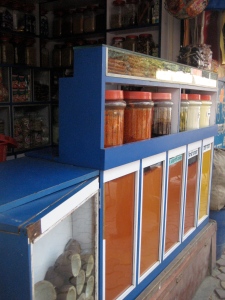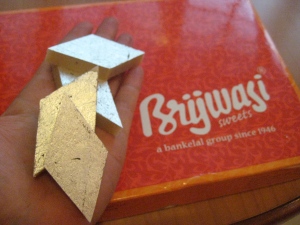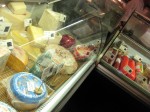I’ve had a lot to reflect upon since I returned from India weeks ago. Returning to the US has given me tons to feel thankful for: greenery, clean streets, and most noteably–the astounding quiet. That being said, I feel extremely lucky to have had the experience I did in Mumbai and will deeply miss many aspects of life there. To no one’s surprise, high on my list of what I (already) miss, is the food.
MY 5 BITES
I’ve stolen a little tradition from one of my favorite DC food blogs, Metrocurean. Rather than posting my favorites bites for DC, I’ve stated my “5 Bites” for Mumbai. Those dishes, especially now that I’ve been gone for a while, are morsels that I miss desperately and insist that anyone who lands in Mumbai must try. Here they are (in no particular order):
1) Malai Ice Cream over Alphonso Mango Pieces– Natural Ice Cream
2) Mysore Masala Dosa – Dosawallah on Juhu Tara road in Santa Cruz
3) Garlic, Black Pepper, Butter Crab – Trishna
4) Grilled Corn seasoned with Red Pepper, Salt, and Lime – Cornwallah on Carter Road
5) Palak Paneer with Tandoori Naan – Jaihind
I didn’t make these decisions lightly, as you can probably guess if you’ve been following this blog. Narrowing it down to 5 choices does injustice to the rest of the amazing food in the city.
I’M LOVIN’ IT
In my final weeks in Mumbai, I was feeling a whole gaggle of emotions. I struggled with the notion of leaving, yet yearned to be home and eat familiar food. I think this bicontinental conflict was rightly expressed through some of the meals I enjoyed in my final week.
Yes. I finally made it to McDonalds. My intrigue extended beyond the Indian-infused menu items. My neighborhood, Bandra, boasted the first McDonalds in India! Ok, if that’s not interesting to you, you might appreciate that the formerly desolate street is now also lined with the likes of KFC and other western fastfood wonders/atrocities. Unfortunately, the success of McDonalds paved the way for a slew of capitalistic dreams. Oh boy. If nothing else, this demonstrates how the city has changed tremendously over the past 20 years.
After eating the McSpicy Paneer, I have to say that I can understand how this place thrives. Spicy, crunchy explosion on the outside; tender and salty paneer on the inside. I’d eaten tons of paneer in India, but there was something about the texture of this paneer, along with the oh-so-familar soggy lettuce/sesame bun combo that hit a sentimental note and managed to merge my nostalgia for home with my love of Indian flavors.
NOT JUST A NYC AREA CODE
About a year ago, Nick’s cousin, Gaurav, opened an Italian resturant in downtown Mumbai called 212. Gaurav has had the good fortune of traveling around the world and even studied in the US. He knows about good food and he was tired of mediocre quality imitations of western food (of which there is much in Mumbai). With business ambition and a love a authentic Italian food, he hired a chef from Milan and opened 212.
Italian food is just about my favorite cuisine, so I had really high expectations for the restaurant. I also can’t pretend that I wasn’t a bit nervous to try the food and not like it!
Fortunately, 212 delivered on everything that I could possibly want out of Italian food. Gaurav takes care to import everything straight from Italy. The carbon footprint is undoubtably high, but the flavors are spectacular and super fresh. Plus, these were some of the flavor profiles I missed most from home.
I went to 212 multiple times while in Mumbai, both for dinner and for drinks (they have a great outdoor patio). A highlight, however, was my final meal there, just days before departing for the US. My regular order of seafood pasta was no longer listed on the menu. No problem. The chef graciously whipped me up some fresh house-made linguine and stacked it high with calamari, prawns, and scallops. My heart sung. Then, crazily enough, I worried that I wouldn’t be able to find such a delicious equivalent back home. Either my next trip has to be to Italy, or I’ll have to hike it back to Mumbai to get my Italian fix.
MOVING FORWARD AND GOING BANANAS
I’ve thoroughly enjoyed writing this blog, and I wanted to find a way to continue writing during my upcoming year in London and beyond. I’ve broadened the scope of what I’m writing about, but the heart of it all remains the same: it’s about food.
If you’re interested, please check out my new blog, Banana Gulch. Why is it called Banana Gulch? You can read the “About Banana Gulch” page to hear all about it. Find it here:
You can easily subscribe to Banana Gulch by clicking the “More Banana Gulch!” button at the top of the page and it will email you when I post something new.
Thank you so much to everyone who followed Read Dal About It and for your wonderful comments. Eat on!



